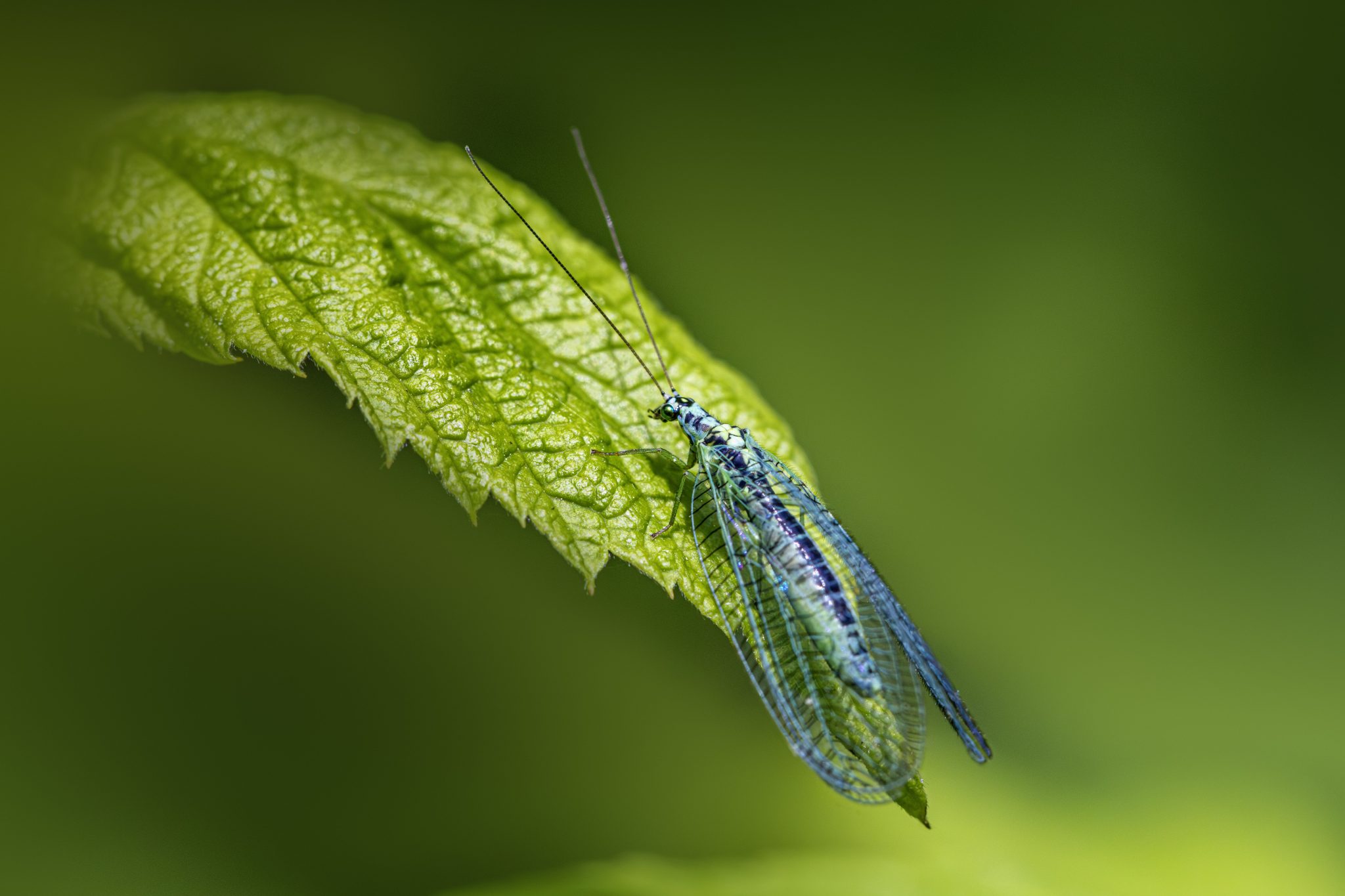Of course — here is a deep, no-pictures overview of the Pearly Green Lacewing (Chrysopa perla):
🪰 Pearly Green Lacewing (Chrysopa perla)
🔹 Taxonomy
- Order: Neuroptera
- Family: Chrysopidae (Green Lacewings)
- Genus: Chrysopa
- Species: C. perla
🌍 Distribution
- Widespread across Europe, including the British Isles
- Occurs into western Asia
- Most common in temperate and humid regions
Not typically found in very dry or southern Mediterranean zones.
🏞️ Habitat
Prefers lush vegetation near woodland and water:
- Forest edges, hedgerows
- Riparian areas (streams, ponds, wetlands)
- Overgrown field margins
- Bushy gardens and parks
The key requirement:
✅ Good populations of aphids, their primary prey
✨ Identification (Field Characteristics)
A striking green lacewing, ~10–13 mm body length.
Key features for C. perla):
- Body bright green with distinct black/yellow markings on head and thorax
- Abdomen with dark lateral spots
- Eyes metallic, golden-coppery
- Wings clear but often with a slight bluish iridescence
- Antennae long and slender
Color often fades to brownish in overwintering adults.
🧬 Distinguishes from the common Chrysoperla species by:
- More richly patterned body
- Slightly broader wings
- More aggressive behavior
🍴 Diet & Feeding Ecology
Adults:
- Predators of:
- Aphids (primary)
- Leafhoppers
- Moth eggs & small larvae
Larvae:
- Highly voracious predators
- Known as “aphid lions”
- Equipped with sickle-shaped jaws to inject digestive enzymes
Vital in natural pest control within many ecosystems.
🔄 Life Cycle
- Two generations per year in much of Europe (bivoltine)
- Eggs laid singly, on slender stalks (to discourage cannibalism)
- Larvae develop rapidly in warm months
- Pupation in a silken cocoon attached to vegetation
Overwintering
- Overwinters as adult, in sheltered leaf litter or buildings
- Color becomes duller and body softens during diapause
🧠 Behavior
- Adults primarily nocturnal, attracted to lights
- During the day, rest close to leaf undersides
- Will actively hunt rather than passively waiting for prey
- Releases foul-smelling defensive fluid when handled
🧩 Ecological Importance
- Significant biological control agent
- Helps balance aphid populations in:
- Woodlands
- Gardens
- Agricultural systems
Their presence often indicates a healthy, diverse vegetation structure.
⚖️ Conservation Status
- Generally common and locally abundant
- Populations may decline with:
- Pesticide use
- Loss of nectar sources (adults supplement diet with pollen/honeydew)
- Removal of hedgerows & damp edges
Benefited by wildlife-friendly gardening and integrated pest management.
✅ Summary Table
| Trait | Detail |
|---|---|
| Size | 10–13 mm |
| Diet | Aphids & small soft-bodied insects |
| Habitat | Damp woodland edges, hedgerows |
| Generations | 2 per year |
| Overwintering | Adult stage |
| Role | Major natural aphid predator |
Visited 3 times, 3 visit(s) today
Views: 89
Subscribe to the newsletter:
